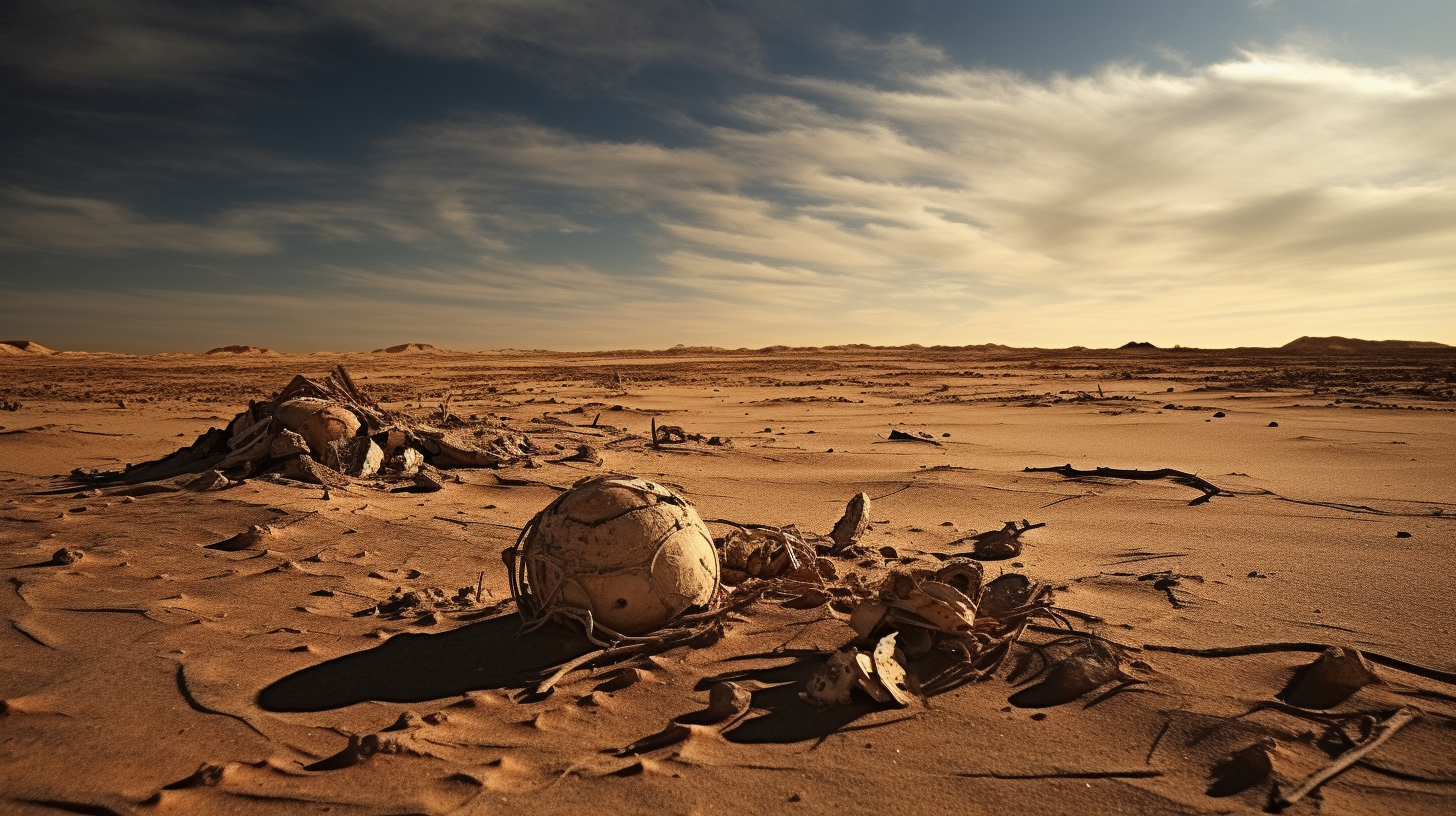In an era where the very ground beneath our feet crumbles into parched grains, we witness the relentless expansion of deserts where children once played in lush backyards. The globe-spanning narrative of climate change and environmental degradation has betrayed not just the soil but the essence of what we once called home. This heart-wrenching tale of displacement and despair is the new folklore of our time; these are the Deserts Once Called Home.
Amidst the tangle of roots that can no longer clutch the Earth, communities gaze upon a horizon marred by the inexorable influx of sand. The deserted landscapes, once fertile and forgiving, have become the harshest of judges, delivering a verdict of abandonment upon humanity’s hubris.
Just days ago, our narrative wove ‘Harvest of Sand – The New Agrarian Crisis’, unearthing the harsh realities of agricultural demise, and we stood witness to the ‘Tsunamis of Sand – The Encroaching Desert Waves’, viscerally illustrating the monstrous growth of lifeless landscapes. Both accounts converging, now lead us to intimate portraits of lives caught in the sandy jaws of a world we fashioned through neglect.
Imagine a canvas where the azure skies tarnish as dust storms rise with the ferocity of dragons, blotting out the sun. Farmers, who once harvested crops, now harvest despair. Their plows lie idle, as tilling the soil is akin to raking over household dust. It’s not just agrarian livelihoods that are asphyxiating; entire ecosystems are in silent collapse. The whisper of grass has been hushed forever, replaced with the hiss of ever-shifting dunes.
Stories of retreat resonate like echoes in abandoned alleyways. ‘Ghoshtowns’ – this ominous word is no longer confined to antique text, but is the living, haunting reality for towns once brimming with life. Families have fled, leaving behind the shells of homes and the skeletons of industry, creating sepia-toned memories where sepulchral winds mourn the exodus of life.
In the realm of aerial views, what we observe could be mistaken for abstract art: geometric patterns of what were fields, now interlaced with sand. The aesthetic, however, reeks of irony rather than beauty – a monument to the fallacy that human progress could ever outrun nature’s adaptability. Our archival treasures of technological prowess lie submerged beneath granules of irony. Autonomous tractors – programmed to cultivate, now navigate fallow seas of grit, akin to ships without a compass.
What remains are scattered vestiges of resilience. Isolated homesteads stand as bulwarks against the relentless tide, their inhabitants clinging to the hope of rain – a hope as brittle as dried leaves. The once-quenched thirst of the land is now a hollow echo, and the bounty that filled our granaries are but a fading legend.
As we pen this narrative of loss, it is not without despair for the future generation – the inheritor of a legacy of dust. The old proverb ‘Home is where the heart is’ finds new meaning when the heart is lost in a labyrinth of sand. We have traded verdant for vacant, sanctuary for solitude, and prosperity for purgatory.
Our discourse does not chart a path of redemption, for the dye has been cast, and the anthropogenic desert spreads unchallenged. It serves as an epitaph to a world that thrived but faltered – a world where we have etched the conclusion of our natural heritage in the sand.
